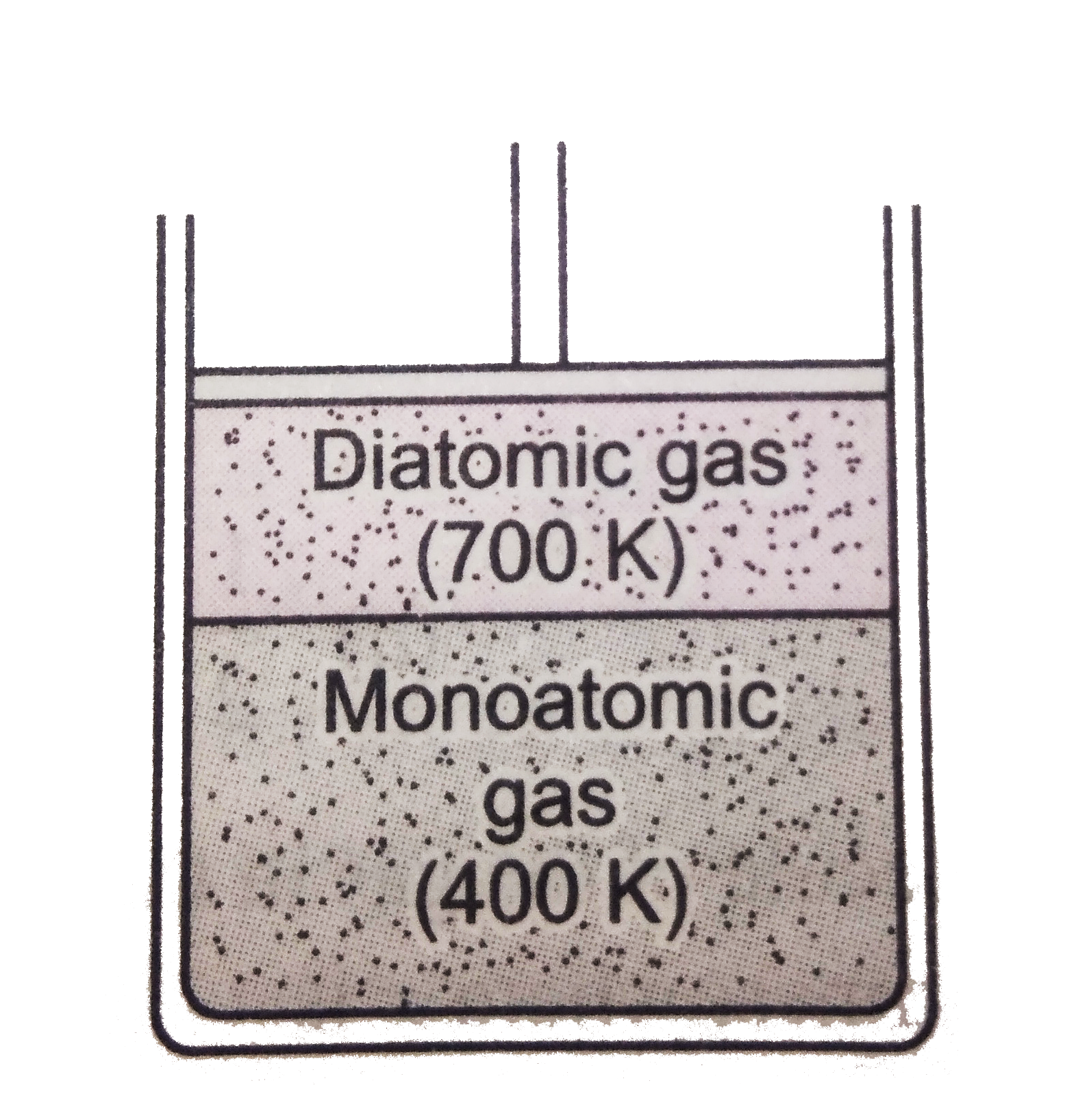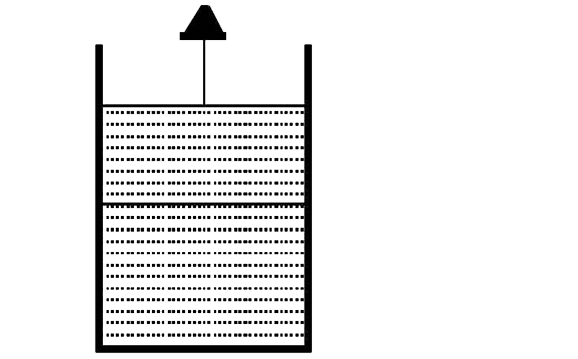A long rectangular box is filled with (at wt 35.45) which is known to contain only and if the box could be divided by a partition and the two tpye of chlorine molecules put into the two compartments respectively calculate where should partition be madel if the pressure on both sides are to be equal Is this pressure the same as original pressure ? .
Average mo1 wt
where and are moles of and isotopes
Now volume prop moles when other things being equal and thus partition should be made at the point where moler ratio is 3.44:1 Pressure at this condition is same as the original pressure ( are constant) .
Topper's Solved these Questions
- GASEOUS STATEBOOK - P BAHADURCHAPTER - GASEOUS STATEEXERCISE - Exercise B
1 Videos
- GASEOUS STATEBOOK - P BAHADURCHAPTER - GASEOUS STATEEXERCISE - Exercise 4
1 Videos
- GASEOUS STATEBOOK - P BAHADURCHAPTER - GASEOUS STATEEXERCISE - Exercise 3
1 Videos
- CHEMICAL EQUILIBRIUMBOOK - P BAHADURCHAPTER - CHEMICAL EQUILIBRIUMEXERCISE - Exercise
134 Videos
- IONIC EQUILIBRIUMBOOK - P BAHADURCHAPTER - IONIC EQUILIBRIUMEXERCISE - Exercise
85 Videos
Similar Questions
A long rectangular box is filled with CI2 (at wt 35.45) which is known to contain only CI35 and CI37 if the box could be divided by a partition and the two type of chlorine molecules put into the two compartments respectively calculate where should partition be made if the pressure on both sides are to be equal Is this pressure the same as original pressure ? .
View SolutionA long rectangular box is filled with chlorine (at. w : 35.45) which is known to contain only 35Cl and 37Cl. If the box could be dvided by a partition and the two types of chlorine molecules put in the two compartments respectively, calcutate where should the partition be made if the pressure on both sides dre to be equal. is this pressure the same as the original pressure ?
View Solution
Knowledge Check
A box is divided into two equal compartments by a thin partition and they are filled with gases X and Y respectively. The two compartments have a pressure of 250 torr each. The pressure after removing the partition will be equal to:
A125 torrB500 torrC250 torrD750 torrA box of 1 L capacity is divided into two equal compartments by a thin partition which are filled with 2g H2 and 16 gCH4 respectively. The pressure in each compartment is reorded as P atm. The total pressure when partition is removed will be:
APB2PCP/2DP/4In Fig., a container is shown to have a movable (without friction) piston on top. The container and the piston are all made of perfectly insulating material allowing no heat transfer between outside and inside the container. The container is divided into two compartments by a rigid partition made of a thermally conducting material that allows slow transfer of heat. the lower compartment of the container is filled with 2 moles of an ideal monoatomic gas at 700 K and the upper compartment is filled with 2 moles of an ideal diatomic gas at 400 K. the heat capacities per mole of an ideal monoatomic gas are Cυ=32RandCP=52R, and those for an ideal diatomic gas are Cυe=52RandCP=72R.
Now consider the partition to be free to move without friction so that the pressure of gases in both compartments is the same. the total work done by the gases till the time they achieve equilibrium will be
 A250 RB200 RC100 RD−100R
A250 RB200 RC100 RD−100R
A box is divided by a thin partition into equal compartments and they are filled with an equal number of hydrogen and heavy hydrogen molecules respectively. If the pressure in the hydrogen compartment is 1 cm Hg, what is the pressure in the other compartment ? What will be the pressure if the partition is removed ?
View SolutionA vessel is divided by a solid partition into two parts of equal volume. One part is filled with nitrogen and the other with carbon monoxide. It may be assumed that the cross-sect.ional areas of the molecules of the two gases are the same. The relative molecular masses of hoth gases are also the same (equal to 28). Finally, the pressures in both parts are the same. After the partition is lifted, the gases begin to diffuse into each other. flow does the amount of each gas that has transferred to the part occupied by the other gas depend on the initial pressures of the gases?
View SolutionWould you place the two isotopes of chlorine, Cl-35 and Cl-37 in different slots because of their different atomic masses or in the same slot because their chemical properties are the same ? Justify your answer.
View SolutionA non-conducting container is divided into two parts of volume 4.5 Litre and 5.5 Litre, pressure 2 atmosphere and 3 atmosphere, number of moles 3 and 4. If partition valve is opened then find out common pressure (in atmosphere). (In both parts ideal gases are identical)
View SolutionIn the figure, a container is shown to have a movable (without friction) piston on top. The container and the piston are all made of perfectly insulated material allowing no heat transfer between outside and inside the container. The container is divided into two compartments by a rigid partition made of a thermally conducting material that allows slow transfer of heat. The lower compartment of the container is filled with 2 moles of an ideal monatomic gas at 700K and the upper compartment is filled with 2 moles of an ideal diatmoic gas at 400K. The heat capacities per mole of an ideal monatomic gas are CV=32R,CP=52R, and those for an ideal diatomic gas are CV=52R,CP=72R,

Now consider the partition to be free to move without friction so that the pressure of gasses in both compartments is the same. The total work done by the gases till the time they achives equilibrium will be
View Solution
